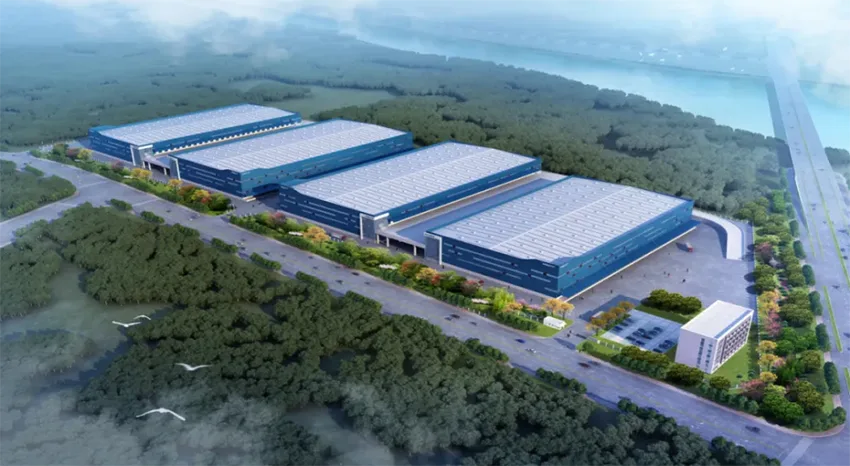現代物流快速發展推動智慧供應鏈演進. 傳統供應鏈與傳統供應鏈的整合與應用 5G, 大數據, 人工智慧, 等新一代資訊科技成為所謂的智慧供應鏈. 智慧供應鏈從精實生產入手,幫助企業實現智慧化, 數位化, 聯網, 物流各方面的自動化. 本文帶您深入了解智慧供應鏈如何改變物流產業和人們的生活.
什麼是智慧供應鏈?

智慧物流 指的是智慧硬體的使用, 物聯網, 大數據, 等智慧技術,提升物流系統的分析能力, 決策, 和智能執行。其最終目的是提高整個物流系統的智慧化、自動化水平. 透過物質流和資訊流的高效運作, 智慧物流降低成本,更好整合社會資源.
智慧供應鏈的工作原理

智慧供應鏈自上而下分為三個部分, 包含 智慧平台, 數位化營運, 和自動化操作. 如果我們把智慧物流比喻成人, 那麼智慧平台就是“大腦”, 數位化營運是“樞紐”, 而自動化操作就是“肢體”. 智慧供應鏈利用智慧平台進行運算, 思考並量化供應商的供應數量, 價格合理, 儲存量, 倉儲地點, 使用者偏好, 等等透過數位化營運平台. 智慧供應鏈指導企業營運, 倉儲, 運輸, 以及其他自動化操作.
以消費者需求為驅動, 智慧供應鏈技術滲透力強,更注重與客戶、供應商的資訊分享與互動。在一定程度上, 智慧供應鏈借助資訊技術優化業務流程, 有利於降低企業成本,使供應鏈透明化, 靈活的, 和敏捷. 強化各部門之間的協作能力有利於企業建立自身的核心競爭力.
將來, 無論線上或線下, 智慧供應鏈可以感知和預測使用者需求, 習慣, 和興趣, 從而指導研發, 製造業, 定價, 以及產業鏈上游的庫存. 並引導下游銷售, 晉升, 倉儲, 後勤, 和分佈, 賦能全產業鏈科學運行.
供應鏈管理的五個流程

01. 分析市場競爭環境,辨識市場機會
競爭環境分析是識別企業面臨的市場特徵和市場機會. 為了完成這個過程, 我們可以對供應商進行深入的研究, 使用者, 現有競爭對手, 透過調查發現潛在競爭對手, 面試, 根據波特模型提供的原理和方法進行分析, 從而掌握第一手準確的數據和資料. 一方面, 這項工作取決於企業管理人員的素質和對市場的敏感度; 另一方面, 企業應建立市場資訊收集和監測制度, 發展複雜資訊分析與決策技術. 例如, 一些企業建立的客戶服務管理體係是掌握客戶需求、進一步開拓市場的強大武器.
02. 分析客戶價值
供應鏈管理的目標是降低總交易成本並提供更好的客戶體驗. 管理者應該從顧客價值的角度來定義產品或服務, 並在不斷提升客戶價值的同時尋求最低的交易成本. 根據行銷大師科特勒的定義, 客戶價值是指客戶期望從給定產品或服務中獲得的所有好處, 包括產品價值, 服務價值, 人員價值, 和形象價值. 一般來說, 找到市場機會並不意味著真正了解產品或服務在客戶心目中的價值. 所以, 產品或服務的具體特徵必須從顧客價值的角度來定義. 只有不斷為客戶提供增值產品,才能滿足客戶的需求, 而客戶需求的拉力是驅動整個供應鏈運作的來源.
03. 確定競爭策略
從顧客價值的角度找到企業產品或服務的定位後, 管理者應決定相應的競爭策略. 競爭策略形式的決定可以使企業清楚知道選擇什麼樣的合作夥伴以及合作夥伴的聯盟模式. 根據波特的競爭理論, 企業獲得競爭優勢的三個基本策略: 成本策略, 差異化戰略, 和目標集中策略. 例如, 當企業確定應用成本策略時, 往往會與擁有相似資源的企業結盟,形成規模經濟. 當企業決定應用差異化策略時, 會選擇創新能力強、適應力強的合作夥伴. 商業企業的連鎖經營是成本的典型例子. 它集成了製造商, 批發商, 採用大規模集中管理模式,將商品流通全過程中的零售商與零售商融為一體. 透過商品配送中心, 配送中心將生產廠商的貨物及時、妥善地配送至分支機構,再提供給消費者. 這樣的做法減少了流通環節, 讓企業更直接面對消費者. 結果不僅提高了流通速度,也提高了回饋速度, 從而達到降低成本的目的.
04. 分析企業核心競爭力
核心競爭力是指企業的研發能力, 設計, 製造業, 行銷, 服務, 以及其他明顯優越且不易被競爭對手模仿的方面. 供應鏈管理聚焦企業核心競爭力. 企業將內部智力和資源集中在具有核心競爭優勢的活動上,將剩餘的業務活動轉移給在該業務上有優勢的專業公司,以彌補自身的不足,使整個供應鏈具有競爭優勢. 在這個過程中, 企業應回答企業的資源或能力是否有價值等問題; 資源和能力是否稀缺。只有擁有更稀缺資源的人才能獲得暫時的競爭優勢. 競爭對手難以模仿的資源和能力是企業持續競爭優勢的關鍵. 企業要認真盤點自己的業務, 選擇與企業生存發展有重大關係、能充分發揮企業優勢的核心業務,剝離非核心業務,交由供應鏈上的其他企業完成. 選定核心業務後, 企業也應該重建業務流程.
05. 評估並選擇合作夥伴
建立供應鏈的過程其實就是評估和選擇供應商的過程. 選擇合適的企業作為供應鏈夥伴是加強供應鏈管理最重要的基礎. 企業需要從產品交付時間全面評估合作夥伴, 供應品質, 售後服務, 和產品價格. 如果企業選擇合作夥伴不當, 不僅會腐蝕企業的利潤,還會使企業失去與其他企業合作的機會, 從而阻礙企業競爭力的提高.
物聯網的作用(物聯網) 在供應鏈管理中

01. 了解供應鏈客戶真正的價值需求
了解供應鏈客戶真正的價值需求是供應鏈的前提, 這就要求企業真正了解客戶深層的經濟與情感訴求, 而不是外部產品和業務需求. 在實際的供應鏈改革或最佳化中, 我們可以使用“價值雷達”來實現這一點. 「價值雷達」指企業供應鏈所實現的效益和客戶所獲得的價值, 其中包括三個方面:
(1) 從供應商角度實現最高性價比的產品與服務, 當需求者獲得使用價值時.
(2) 供應商可以降低供應鏈的擁有成本, 而需求者可以獲得情感價值.
(3) 供應商不僅可以降低供應鏈的擁有成本,還可以幫助客戶降低各種機會成本, 而需求方獲得開發價值.
02. 借助資訊技術,供應鏈管理全流程視覺化
供應鏈全程視覺化管理是指供應鏈各參與者能夠及時反映供應鏈全過程, 國內外市場狀況及運作狀況, 並追蹤物流和交易活動, 從而及時偵測並控制供應鏈的運作過程.
03. 中號圓形的 s供應鏈營運架構
企業可以採用模組化的方式整合供應鏈,使供應鏈具有良好的緊急應變能力和流程處理能力, 那是, 提高組織靈活性的能力.
04. 即時供應鏈計畫與執行連結系統
即時供應鏈計畫與執行連動系統是指供應鏈計畫與執行系統之間在資料與流程層面都能夠有效的連接, 這就要求企業實現資料、資訊的共享和同步, 以及相關的組織和流程管理.
05. 完善的報告和績效管理, 以及良好的供應鏈預警
06. 建立和營運智慧化、敏捷化, 高效率的, 和精實供應鏈敏捷性
智慧供應鏈的價值

01. 科技更具滲透性
智慧供應鏈通常採取互聯網, 雲端運算, 大數據, 人工智慧, 等新一代資訊科技為支撐點, 在數據資訊的取得上也採用了可視化的方式.
02. 資訊整合更強
依托最高開放共享的智慧資訊網絡, 智慧供應鏈系統有效解決企業各職能部門資訊系統異質問題, 並實現業務流程的無縫對接, 後勤, information flow, and capital flow, so that the information in the supply chain has stronger integration and sharing.
03. More collaborative
The high integration and sharing of information enable enterprises to understand various information inside and outside the supply chain in a timely and effective manner. Enterprises communicate with upstream and downstream enterprises in the supply chain at any time according to the actual situation and make targeted adjustments and collaborations, 從而大大提高供應鏈的運作效率與效益.
04. 更具可擴展性
智慧供應鏈以先進的互聯網資訊技術為支撐, 且供應鏈中的各類資訊具有更強的流動性, 一體化, 和分享. 企業可以隨時與供應鏈上下游其他成員溝通與互動, 從而大大增強供應鏈的延展性. 這有效解決了傳統供應鏈中資訊層級傳遞帶來的效率下降問題.
智慧供應鏈的挑戰

01. 加強企業對智慧供應鏈的理解
如今, 我國智慧供應鏈管理仍處於較低水平. 所以, 企業不僅需要加深對智慧供應鏈的理解, 但還需要明確明確的智慧供應鏈發展策略. 明確個人化供應鏈發展方向,有利於確保公司利潤目標的實現,引領公司生產向智慧化升級.
02. 完善建設 聰明的 物流系統 並提高資訊化水平
如今, 大多數物流作業仍處於手工階段. 物流各環節資訊溝通程度較低. 製造業物流體系建設落後, and the road to logistics automation and intelligence still has a long way to go. So manufacturing enterprises need to improve the application of new technologies like the Internet of Things, and cloud computing in logistics systems.
03. Collaborate with the whole supply chain to create a smart platform
智慧供應鏈的建設需要供應鏈上各企業的共同合作與努力。因此,製造業應透過物聯網等新技術與傳統製造技術的融合,建構智慧供應鏈平台。. 這些將實現人類的融合與共享, 資訊, 職員, 和機器, 最終形成智慧供應鏈體系.
04. 引進並培養專業供應鏈人才
專業供應鏈人才培育是建立智慧供應鏈的核心. 現在, 大多數製造企業還沒有認識到這一點,沒有足夠的專業人才.
智慧供應鏈解決方案

01. 儀表化
工具化是指管理中的資訊必須由自動化或感測設備產生, 例如 射頻識別, 標籤標籤, ETC. 沒有有效的資訊通信技術的支持, 管理資訊將無法取得. 所以, 工具化是智慧建造的首要特徵.
02. 互聯
它指的是所有參與者, 資產, 資訊系統, 和管理階層中的業務必須高度關聯. 智力意味著不同學科, 企業, 要素透過資訊通信科技形成相互關聯、相互依存的網絡關係.
03. 聰明的
這意味著ICT可以實現大規模優化決策,提升管理績效. 管理的智能化在於透過資訊和通訊技術實現資訊的集成, 從而優化決策流程,有效引導生產經營朝向高效率、高競爭力方向發展.
04. 自動化
這意味著業務流程可以由資訊設備驅動, 然後替換其他低效率資源, 特別低效率的人工幹預. 管理中人為因素的頻繁幹預往往導致效率低下. 這不僅是因為人為幹預延遲了反應時間, 但往往是因為人們有道德風險, 增加資訊不對稱和機會主義的可能性.
05. 融合的
情報可以促進不同參與者之間的協作, 包括共同決策, 公共系統投資, 資訊共享, 等等.
06. 創新的
智慧供應鏈驅動管理創新, 提供一體化解決方案創造新價值, 或以新的方式滿足現有的價值需求.
應用 e的例子 s市場 s供應 C海恩

01. 基於區塊鏈技術的智慧供應鏈創新應用
隨著區塊鏈技術的不斷成熟, 智慧供應鏈已開發. 介紹區塊鏈技術如何賦能智慧供應鏈及其對應價值,有助於改善智慧供應鏈產業的現況與業務痛點. 透過多個以華為雲端為基礎的智慧供應鏈及物流產業應用創新項目, 它解釋瞭如何優化流程, 提高效率, 透過區塊鏈和物流在實際應用場景中面臨的調整和困難來降低成本.
02. 基於物聯網技術的智慧供應鏈應用
傳統供應鏈隨著資訊科技的發展而不斷演變. 尤其是隨著物聯網技術的不斷升級, 傳統供應鏈正朝著更智慧、更有效率的方向發展. 智慧供應鏈可以更好地連接業務流程, 後勤, information flow, and capital flow, 從而提高整體效率. 從物聯網及其智慧供應鏈的現況出發, 本文介紹了物聯網下智慧供應鏈的相關概念,並探討了基於物聯網的智慧供應鏈的具體環節管理, 最後提出了智慧供應鏈未來發展的展望.
03. 基於服務價值網絡的智慧供應鏈應用
產業供應鏈實現的基礎是服務價值網絡. 產業供應鏈實現的要素是智慧化手段與平台, 而產業供應鏈的實現路徑就是價值循環分析.
04. 城市智慧供應鏈發展指數建構及應用
新一輪科技革命與產業變革驅動, 智慧供應鏈快速發展. 城市智慧供應鏈的相關發展也成為當前供應鏈研究領域的重要議題. 然而, 傳統的供應鏈發展評估指標系統很難直接應用於智慧供應鏈的評價. 所以, 所以, 本文從六個構面建構了中國城市智慧供應鏈發展評估體系: 城市智慧供應鏈基礎設施, 人力資源投資, 資本投資, 企業創新, 以及供應鏈的效率和有效性. 為城市管理部門量化智慧供應鏈發展水準提供方法依據.
05. 國際產能合作智慧供應鏈績效應用
越來越多的企業開始重視國際產能合作,利用智慧化手段優化升級供應鏈. 然而, 傳統的企業供應鏈管理方式已經無法滿足智慧化供應鏈管理的需求. 所以, 智慧供應鏈績效的影響因素將對提升企業智慧供應鏈管理水準起到關鍵作用. 為推動國際產能合作智慧供應鏈發展, 我們需要探討影響智慧供應鏈績效的因素. 研究發現,智慧科技透過三個維度的提升,對供應鏈關鍵要素和智慧供應鏈績效產生正面、直接的影響, 即先進水平 智慧科技, 應用水平, 和生態發展水平. 他們之中, 在生態發展過程中推動智慧供應鏈發展, 我們應該從需求出發,結合管理方法,將不同的技術應用到最適合的場景, 這有利於性能的提高. 供應鏈的關鍵要素, 包括供應鏈網路佈局, 通路整合, 和協作共享, 也將對智慧供應鏈的績效產生正面而直接的影響.
企業國際產能合作越深入, 供應鏈要素優化對智慧供應鏈績效提升的作用越大. 所以, 以提高智慧供應鏈的績效, 一方面, 需加強專業技術研發, 利用特殊技術打通整個供應鏈, 多向發展、多元組合, 並充分發揮不同的技術特點. 同時從三個面向提升自身智慧科技能力: 高級水平, 應用層, 和生態發展水平, 還需要從需求出發,結合管理方法,將不同的技術應用到最適合的場景.
世界知名 智慧供應鏈 公司和軟體
01. E2OPEN
E2OPEN 是一家基於雲端的供應網路解決方案供應商. 各領域的大型品牌製造商和生產商使用E2open軟體和平台協調其全球供應鏈以提高效率. 系統具有供應鏈監控與分析, 訂單管理, 存貨, 和交通功能. 與E2OPEN, 您可以整合現有數據. E2OPEN的供應鏈分析有助於準確分析和整合運輸, 存貨, 倉庫, 和其他數據.
02. SAP供應鏈管理
SAP系統是世界上最優秀的ERP系統之一. 一個好的ERP系統不僅能最大程度地承擔企業的管理和業務流程,還能在技術上實現快速部署和挑戰. 對於用戶, 它很容易使用, 邏輯的, 方便的, 且可控. 能夠完美理解使用者的需求. SAP供應鏈管理利用物聯網和人工智慧等新技術提供進階分析,幫助準確、及時地採購和交付貨物和材料. SAP供應鏈管理具有SAP整合業務規劃, 和供應鏈協作軟體.
03. 邏輯性
Logility 是提供高階分析和最佳化規劃的供應鏈管理軟體. Logility 目前的數位供應鏈利用智慧解決方案來幫助您積極應對市場上發生的事情. Logility 還可用於分析和應對困難的零售和供應鏈規劃挑戰. Logility的主要功能包括優化庫存和供應鏈, 整合業務規劃, 管理數據, 零售, 運輸, ETC.
04. 完美商務
Perfect Commerce供應鏈管理軟體透過提供解決方案幫助企業簡化支付方式並實現利潤最大化. Perfect Commerce為您提供節省戰術類別策略資源的解決方案,以便您可以控制支出. Perfect Commerce 提供的精品方法可讓您透過提供關注和個人關懷與客戶互動.
05. 甲骨文供應鏈管理
作為ERP產品, Oracle 和 SAP 模組在名稱和劃分方面有所不同. 第一的, SAP分為兩類: 物流與金融 & 控制. Oracle分為發行版 (單晶片), 製造業 (製造工廠), 和金融 (鰭). 供應鏈計畫雲, 製造雲, 而訂單管理雲是Oracle的SCM產品. 供應鏈規劃雲的主要作用是為企業設計成長獲利和降低成本策略, 使用戶能夠使用視覺化分析和智慧建議. 供應鏈計劃雲使用戶能夠注意到計劃偏差, 即使沒有經驗的使用者也能有效地進行規劃.
06. 資訊供應鏈管理
作為供應管理軟體, Infor SCM integrates all the links of the supply chain into an organic operation to improve the comprehensive efficiency of the enterprise supply chain. It has a unified and complete solution, including warehousing management, transportation management, labor management, and third-party logistics billing functions. Infor’s supply chain management system helps enterprises to build a complete supply chain and form a set of integrated and simplified business processes. By combining with Nexus Commerce, users can get a faster workable solution to supply chain problems.
07. JDA SCM
JDA Supply Chain Management software uses innovative technologies to effectively analyze, plan, and monitor the end-to-end supply chain to deliver differentiated services to customer segments. JDA SCM 旨在簡化當今消費者驅動的市場. JDA 基於雲端的供應鏈管理解決方案可以幫助企業降低成本並改善從規劃到交付的協作.
08. 曼哈頓供應鏈管理
曼哈頓SCM是曼哈頓提供的一套零售管理解決方案, 幫助零售商打通供應鏈全環節, 包括從前端客戶到後端製造以及中間物流倉儲。
作為供應鏈商務解決方案的全球領導者, 曼哈頓公司建立了強大的技術解決方案來解決最複雜的關鍵業務供應鏈, 存貨, 和全通路挑戰超過 25 年. 它發展, 賣, 部署, 並支持其為零售商提供的解決方案, 批發商, 經銷商, 第三方物流企業, 以及世界各地的生產商.
09. Epicor單晶片
Epicor供應鏈管理軟體SOA架構整合財務管理精髓, 分銷管理, 和製造管理納入 Epicor ERP. Epicor從製造起家,深耕製造管理, 圍繞每個行業的獨特營運需求設計解決方案. 擁有豐富的經驗和成功案例, 深入了解企業用戶痛點, 並幫助更快、更準確地解決使用者需求. 解決方案, 現場或雲端可用, 使客戶能夠專注於核心成長活動並管理複雜性. Epicor SCM 功能需求管理, 採購管理, 庫存管理, 和運輸管理.
010. 達梭系統 SCM
作為溢價 supply chain management software, 達梭系統 SCM 為汽車產業的供應商和製造商提供管理採購規劃. 從收集需求到持續追蹤和提高供應銀行績效,採購週期所需的完整工具至關重要. 達梭系統 SCM 提供了出色的解決方案,使供應鏈能夠按配置文件進行分類,從而為供應商提供位置和功能的結構.
智慧供應鏈發展歷程
智慧供應鏈的發展階段可分為:
● 傳統供應鏈管理階段.
● 技術與管理階段一體化.
● 技術與管理階段的融合.
● 智慧供應鏈階段 (技術與管理一體化階段).
















